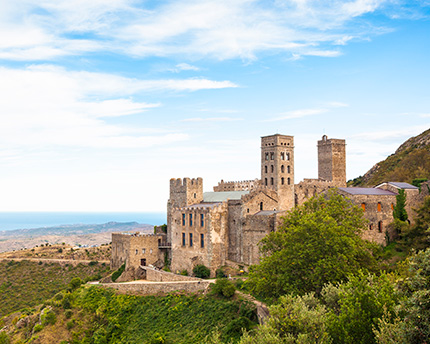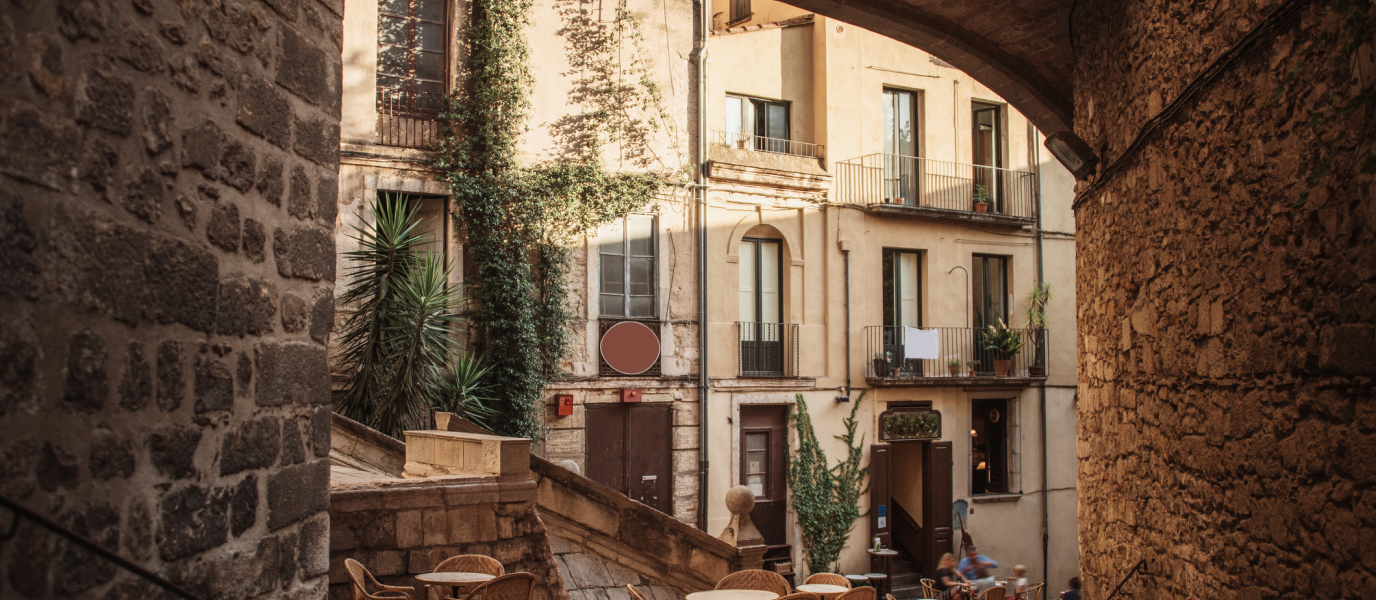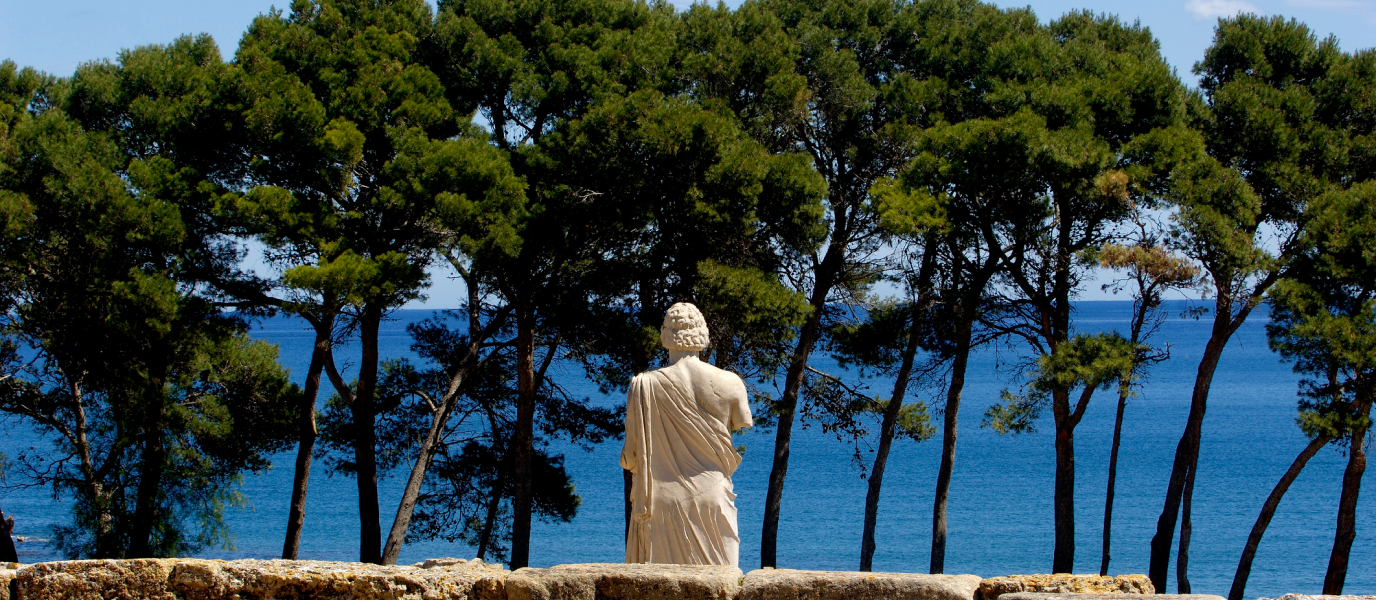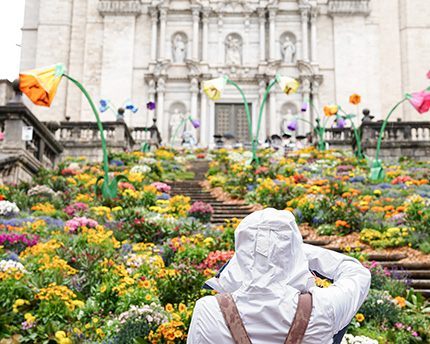The monastery of Sant Pere de Rodas sits in the highest part of the Serra de Verdera, next to El Port de la Selva, and, in conjunction with the village of Santa Creu and the castle of Sant Salvador de Verdera, it forms one of the most important complexes of medieval monuments in Catalonia. It its heyday, the monastery was the most important in the Empúries region because of the key role played by its abbots and its status as a pilgrimage site.
However, despite having been one of the most important centres of spiritual, political and economic power of its time, the community of Sant Pere de Rodes almost never housed more than around twenty Benedictine monks at once.
An entrance ticket to the Sant Pere de Rodes complex of monuments costs €6 but discounts are available, and even free entry, for different types of visitors: pensioners, students, large families, the unemployed, etc. Entry is also free on the last Tuesday of every month from 1 October to 30 June.
Historia del Monasterio de Sant Pere de Rodes
From the moment of its foundation, the monastery of Sant Pere de Rodes enjoyed protection from the counts of Empúries, who granted it land and privileges. It was made an abbey in 944. Santa Creu de Rodes was included among its domains and the village focused on trade and craftsmanship, meeting the needs of the monastery. The monastery enjoyed great prosperity from the 12th to the 14th century partly because it was an important destination for pilgrims. In the 18th century, wars, sacking and a disastrous economic situation caused by poor harvests and plagues eventually led to the abandonment of Santa Creu and the monastery. The building progressively deteriorated during the 19th century and early 20th century, until it was made a National Artistic Monument in 1930 and restoration work began. Today it’s one of the most-visited monuments in Spain.

What to see when you visit the monastery
The monastery church is the most important building at the Sant Pere de Rodes complex of monuments and is an outstanding example of the Catalan Romanesque. The church, which is notable for its wealth of decoration and spectacular, and now almost vanished, marble portico by Master Cabestany, was built between the 10th and 11th centuries to welcome pilgrims. Incredibly, it was built on the sides of a mountain meaning the builders had to lower the rock level at the south end of the church and fill in inclines of almost 4 metres to balance and stabilise the building.
But there is much more to see at Sant Pere de Rodes besides the church. Take your time to see the wine cellar with its 17th century vaulting and arcades, the crypt, the 11th century lower cloister (which was discovered during excavations in 1989) and the 12th century upper cloister, the heart of the Benedictine monastery, today practically rebuilt.
The monastery still retains its 12th chapter house, where the abbot and community of monks would meet to discuss important matters related to the monastery, but this space isn’t open to the public. You can visit the refectory though, which was used as a communal dining room, and the kitchen, which was connected to the kitchen gardens.
The gatehouse, next to the bell tower and a defensive tower, linked cloistered monastery life to the outside world through a door that led to the courtyard. The larder was next to it and was fitted with a cold room and a cistern that supplied water from the kitchen gardens to a fountain in the cloister.
You should also visit the tower of Sant Miquel, which stands next to the church; it was originally a bell tower but over time was converted into a chapel where the monks could hold ceremonies. The Abbot’s Palace was once a three-storey Gothic building but today only the façade remains. In 1989, a treasure trove of 658 gold and silver coins dating from the 14th and 15th centuries was discovered here, and they can now be seen in the National Art Museum of Catalonia.
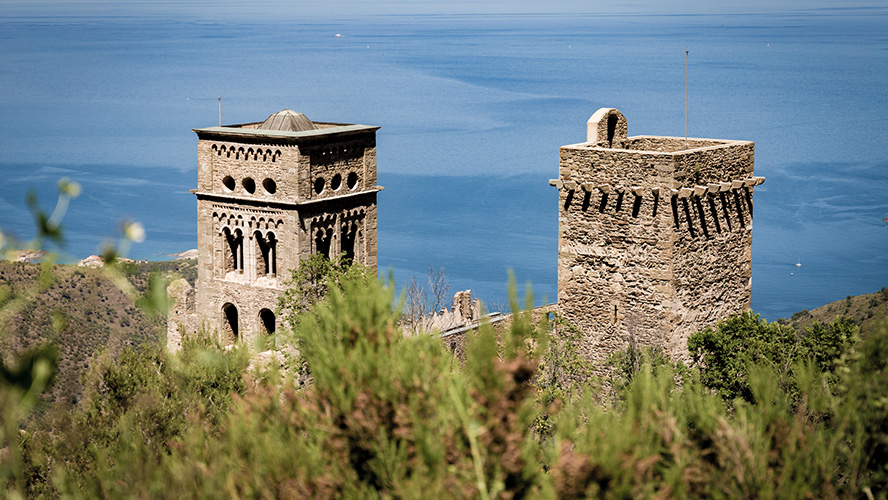
Cultural events and exhibitions
Cultural events and temporary exhibitions are held inside the monastery of Sant Pere de Rodas throughout the year that are related to the culture and history of the complex of monuments. For example, a temporary event was recently held here called “Federica Dalmau: history’s first influencer’. What’s more, you can attend wine tasting events with dramatizations starring historical characters linked to wineries in the area. And you can also book nocturnal visits and dramatized tours of the monastery.
Viewpoint and panoramic views
When you visit the monastery of Sant Pere de Rodes, don’t miss the viewpoint next to the defensive tower and its spectacular views of the north coast of Cape Creus, the castle of Sant Salvador and the area where the monastery’s kitchen gardens once were. You’ll see that, in their day, the kitchen gardens were connected to relevant interior parts of the complex, such as the stables, workshops, kitchen, larder and refectory.
What can I see in the surrounding area?
This complex of monuments in the Serra de Rodes, including the spectacular monastery of Sant Pere, is joined by other monuments and buildings of historical interest that give you a better understanding of the abbey’s key role as a centre of feudal power. You should visit the remains of the 11th century castle of Sant Salvador de Verdera, which was closely linked to the history of the monastery. Today you can admire its defensive structures, a cistern and a medieval latrine, and also enjoy fantastic views over the Empúries plains. The village of Santa Creu de Rodes was abandoned in the 16th century; all that remains are the lower parts of some houses, a few streets and two gateways in the wall that surrounded the village. However, the neighbouring church of Santa Elena de Rodes has been restored; it was plundered in the 19th century and refurbished in 1992.
It’s also well worth visiting other buildings linked to the monastery, such as the hospital, a two-storey structure that was used as a hostelry for pilgrims. Other interesting sights include the remains of the terraces where vines once flourished and the dry-stone irrigation channel that transported water from the mountains to the kitchen gardens. Another impressive place to visit is Coll del Bosc, a hill that looks down on the village of La Selva de Mar, the valley of Sant Romà and the north coast of Cape Creus. And if you have time, cool down in the icy water at Font dels Monjos, a fountain sheltered under ancient plane trees.
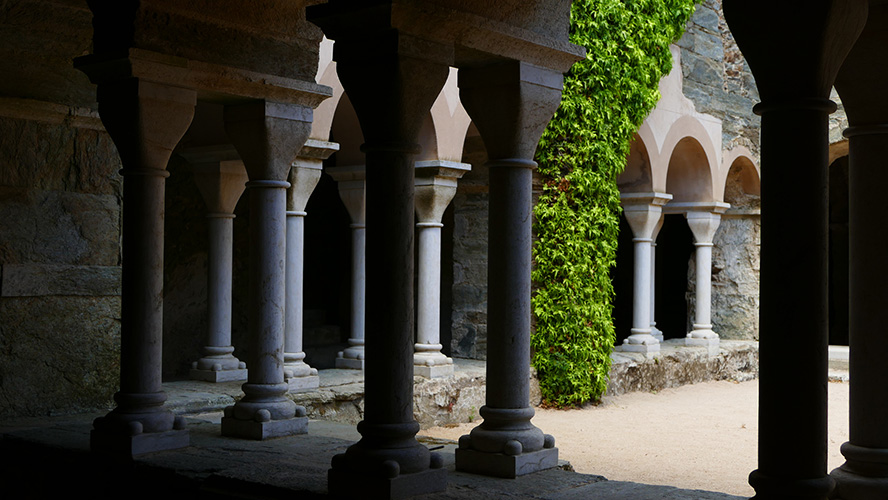
The best hotels in Girona province
If you’d like to enjoy the monastery of Rodes and stay in a hotel with every comfort that you can use as a base for your trip, look no further than the new Hotel Roses Platja, set right on the beach front with direct access to the sea. It also has a pool, which is covered or uncovered depending on the season. This charming, colonial-style hotel has a wide variety of facilities and restaurants, such as the buffet restaurant and snack bar. It’s perfect for a few days’ holiday as a family, with friends or as a couple. It has 167 rooms with fabulous sea views and private terraces




































































